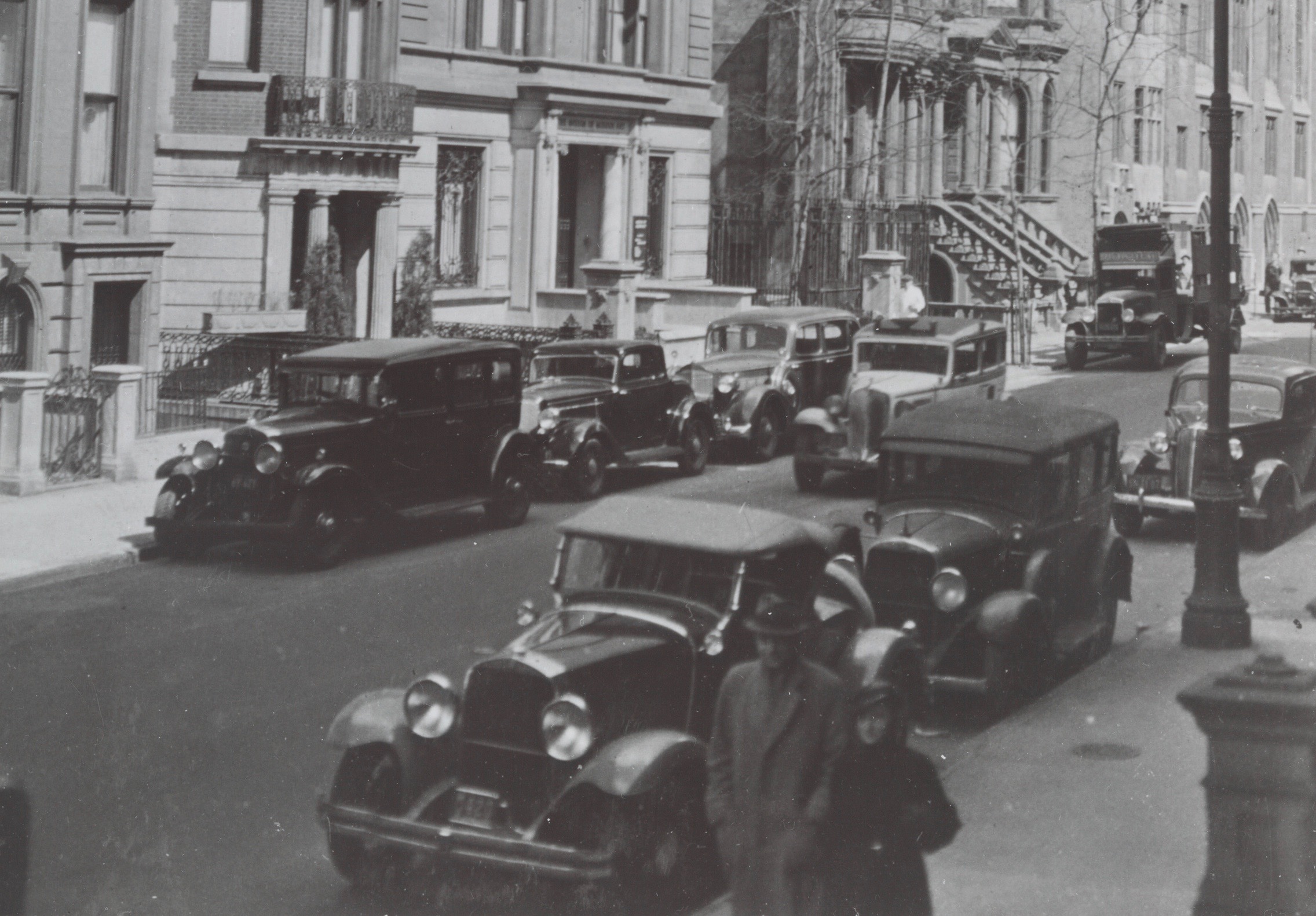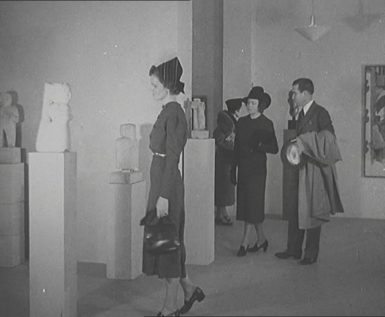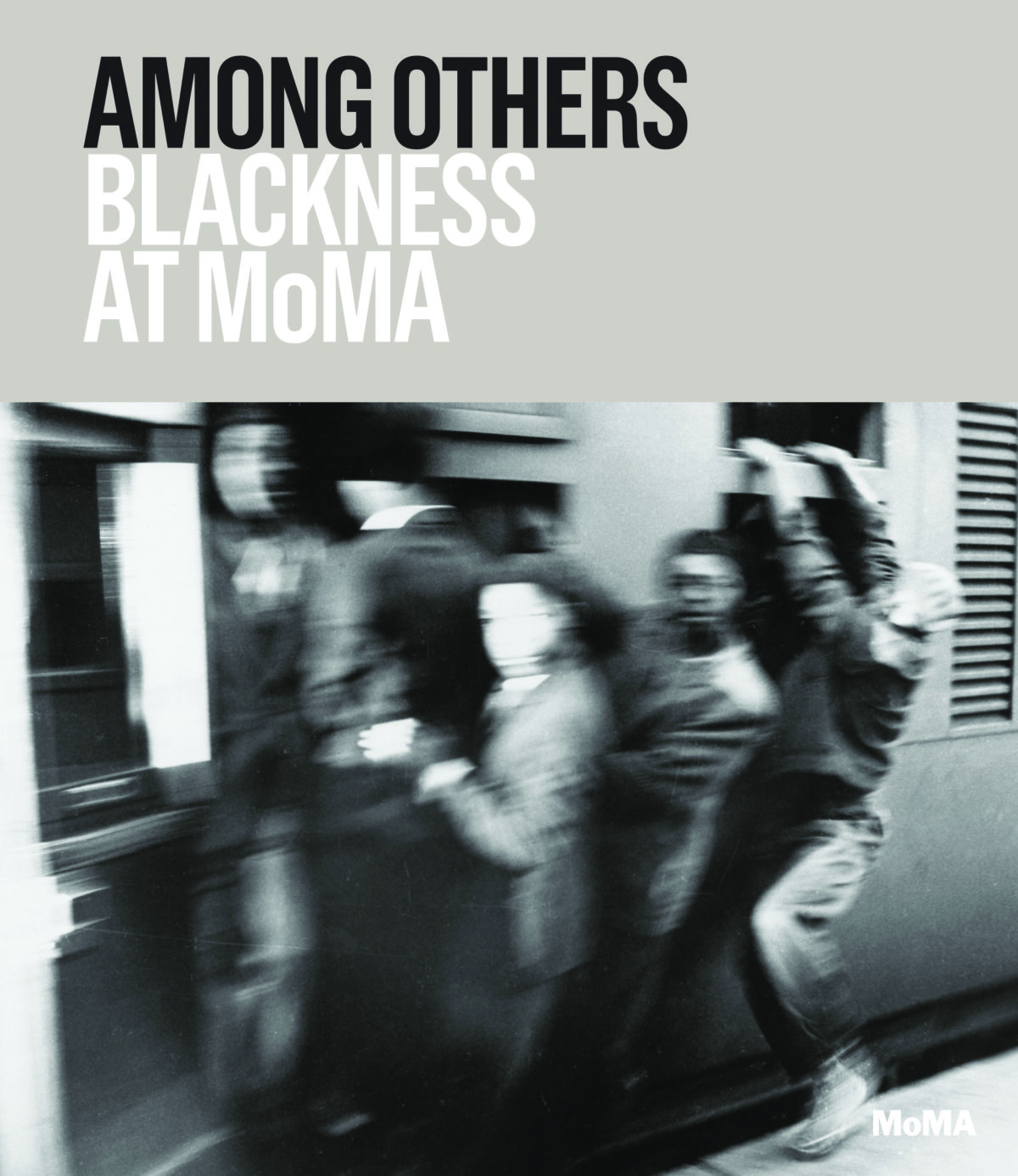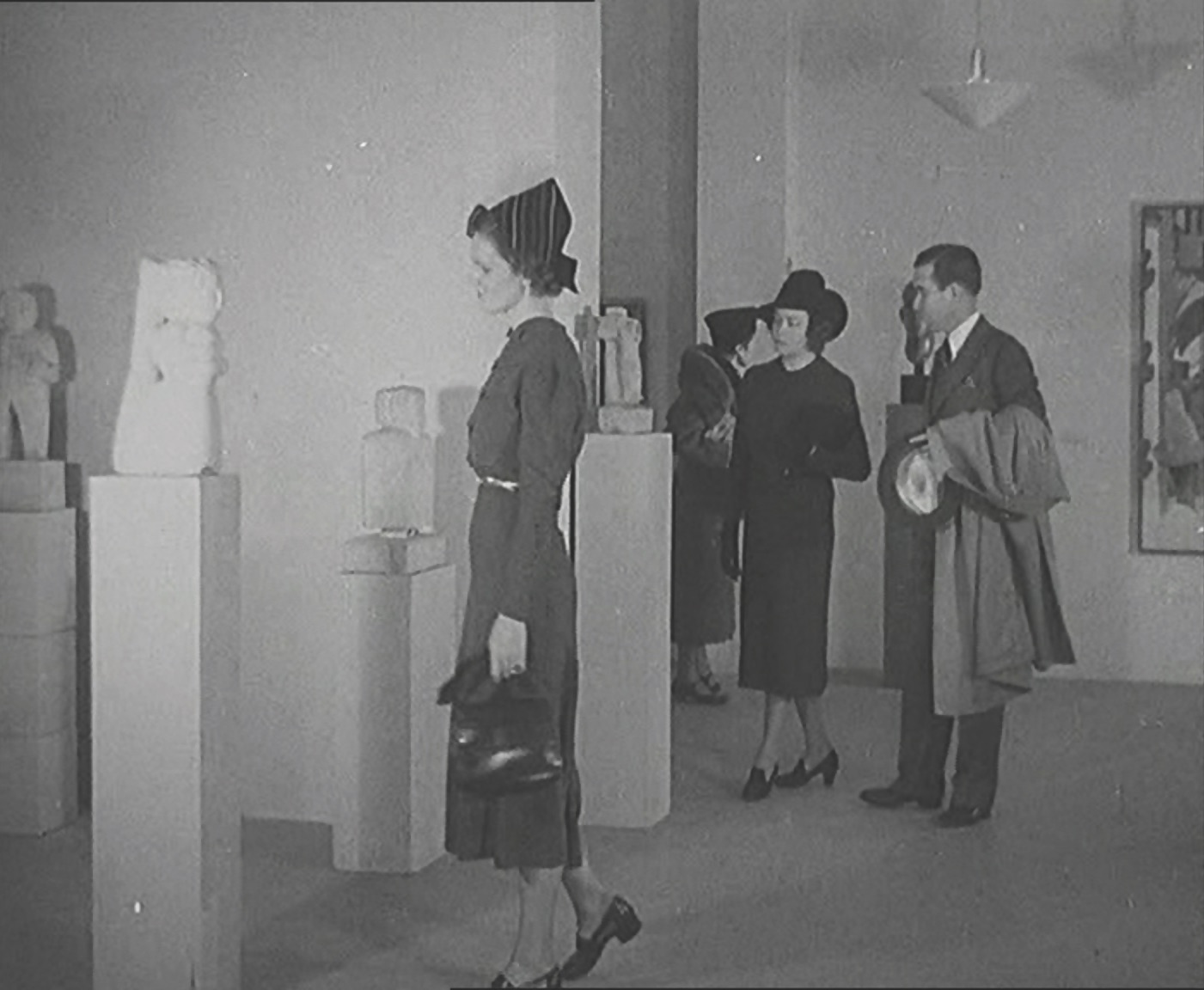[ad_1]

Facade of original town house of the Museum of Modern Art at 11 West 53rd Street.
COURTESY MUSEUM OF MODERN ART
The following is adapted from Among Others: Blackness at MoMA, a book featuring texts by dozens of artists, curators, critics, and others to be published by the Museum of Modern Art in September. In “Blackness at MoMA: A Legacy of Deficit,” the volume’s foundational essay, MoMA curatorial assistant Charlotte Barat and art historian Darby English—who cowrote the text and edited the book as a whole—survey complicated histories relating to the presence and absence of black artists in the museum from its founding. In the context of what they at one point identify as MoMA’s “egregious failure to meet its responsibility as an institution dedicated to the most complex representational issues of our era,” the authors pose a series of questions: “In what conception of ‘importance’ do only white men—and the odd woman or black person—get to be MoMA-great? What kinds of practical imagination, what kinds of investment of resources, and what kinds of committed work will be needed permanently to alter that conception without destroying what you’ve built?” —The Editors of ARTnews
It was 1934, almost five years after the Museum of Modern Art’s founding, before the work of a black American artist was exhibited there. That year, Earle Richardson’s lush portrayal of four black cotton workers was the sole painting by a black artist included in a MoMA exhibition of works realized under the Public Works of Art Project (PWAP), the first of the New Deal’s art programs. Established in 1933, the PWAP aimed to bring relief to the artists of the Great Depression, giving roughly 3,500 artists an average of $34 per week—“craftsmen’s wages”—to create works to embellish tax-funded buildings and parks. Although it was structured to welcome any qualifying artist with a demonstrable need of employment, only 500 women, some 30 Native Americans, and roughly a dozen black artists were enrolled.
In the spring of 1934, the Corcoran Gallery in Washington, D.C., had presented an exhibition of over 500 PWAP works selected by 16 regional committees. Asked to depict the “American scene in all its phases,” artists had projected a vast nationalist image of the rural and urban United States, north, south, east, and west. This vision included people of all colors, both thriving and indigent. Believing in “supporting the artists during the horrible depths of the Depression,” as the longtime MoMA curator Dorothy C. Miller would recall, Alfred H. Barr Jr., MoMA’s founding director, volunteered to bring the show to the Museum. Roughly half of the works on view at the Corcoran were sent to New York; from these, Barr made a further selection of about 150 works—including that by Richardson, a native New Yorker.

Installation view of “Sculpture by William Edmondson,” presented at the Museum of Modern Art in New York in 1937.
COURTESY THE MUSEUM OF MODERN ART
To the eye of Barr, Richardson’s painting evidently outshone works by black artists Samuel Joseph Brown, Malvin Gray Johnson, and Archibald J. Motley Jr., which had also come to New York for his consideration. Perhaps the choice reflected stereotype-driven contemporary expectations. Richardson’s Employment of Negroes in Agriculture evoked the rural South, presenting black workers as dignified subjects and recognizing their national contribution. But why select an image of cotton-pickers when this was the very scene and situation that black participants in the Great Migration to northern cities (including New York) were seeking to exit? Why rule out Motley’s Barbecue (c. 1934), a vivid and vibrant image of glamorous black revelers? To exclude John Slavin’s Negro Gentleman and Johnson’s portrait of Booker T. Washington all but states a hesitancy to countenance convincing representations of black thriving, black modernity, and, indeed, the fact of black power.
New Deal–era art programs such as the Federal Art Project gave MoMA a framework, and government sponsorship, for the limited inclusion of black artists in group exhibitions such as “New Horizons in American Art,” a show in 1936 that included some 435 objects, among them works by black artists such as Brown, Charles Alston, Allan Rohan Crite, and Charles Sebree. Barr’s home-grown category of “modern primitives” (i.e., contemporary unschooled artists of various sorts) also allowed a few black Americans’ work to be seen at the Museum, albeit within a frame that today’s viewer readily identifies as problematic. In its early years the Museum multiplied initiatives to promote “artists of the people” said to be ignorant of and disconnected from any technical or aesthetic tradition. Along with artists such as Camille Bombois, Edward Hicks, John Kane, Joseph Pickett, and Henri Rousseau, the (black) autodidacts William Edmondson, Horace Pippin, and Bill Traylor occupied an artist class that Barr deemed essential to the development of modern art: “the primitive” represented for him “one of the main streams of modern taste.” Following the landmark exhibitions “Cubism and Abstract Art” (1936) and “Fantastic Art, Dada, Surrealism” (1936–37), “Masters of Popular Painting: Modern Primitives of Europe and America” (1938) was presented as the last in a trilogy of exhibitions introducing “the principal movements of modern art” in “an objective and historical manner.” Barr’s esteem for these self-taught artists was genuine; to him, they represented “the best introduction to a general survey of modern painting such as the Museum Collection will eventually present. For these 20th-century primitives belong to no movement or ‘ism’. . . . they excelled at painting to such a degree that they have won the admiration of professional artists of the highest standing.”
Edmondson, a limestone sculptor from Nashville, was the first so-called “modern primitive” to receive a solo exhibition at MoMA. “The Sculpture of William Edmondson,” in 1937, was also the Museum’s first exhibition devoted solely to the work of a black artist; too, it was Edmondson’s debut in a fine-art context. Louise Dahl-Wolfe, a photographer for Harper’s Bazaar, had come across Edmondson in Nashville, taken pictures of him and his work in his front-yard studio, and tried unsuccessfully to convince William Randolph Hearst, Bazaar’s infamously prejudiced publisher, to run a feature on him. Next to take possession of her portfolio was Thomas Mabry, MoMA’s executive director and a Tennessee native who was most likely already acquainted with Edmondson’s work. Upon seeing the pictures, Barr agreed to bring a group of sculptures to MoMA, and in October 1937, Miller, the curator, installed twelve of these in an alcove space in temporary quarters the Museum had at Rockefeller Center. The selection provided a good representation of Edmondson’s repertoire: religious subjects (Preacher, The Ark, Small Angel, Crucifixion, and two titled Mary and Martha) were shown alongside secular characters (Lawyer, Lady in a Cloak, Woman with Bustle, and The Bride) and animals (Ram and a trio of Mourning Doves).

The book jacket for Among Others: Blackness at MoMA by Charlotte Barat and Darby English.
COURTESY MUSEUM OF MODERN ART
MoMA considered producing a small catalogue for the show, or publishing an essay in The Bulletin of the Museum of Modern Art. In the end, however, the Museum’s literary contribution to the show was limited to its press release, which correspondence suggests was copied from a text sent by Alfred and Elizabeth Starr, the Nashville patrons of Edmondson who had introduced him to Dahl-Wolfe. In any case the press release was, to put it mildly, problematic. “Mr. Edmondson, a Negro of Nashville, Tennessee, has had no art training and very little education,” it reads by way of introduction, before describing the artist as “simple, almost illiterate, entirely unspoiled” and likely to have “never seen a piece of sculpture not his own.”
The release goes on to cite quotations from Edmondson himself. “Dis here stone n’ all those cut there in de yard – come from God. It’s de word in Jesus speakin’ his mind in my mind,” reads one section. Another, invoking a great flood: “I had a vision. Yes, sir, I wuz jus’ a little boy ’bout 13, 14 years old, doin’ in de corn fields. I saw in de east world, I saw in de west world, I saw de flood. I ain’t never read no books nor no Bible and I saw de water come. It come up over de rocks, covered up de rocks and went over de mountains. God, he jus’ show me how.”
It has been suggested that Edmondson was speaking to the occasion: that he well knew how big-city art audiences would expect him to sound and adjusted his discourse to fit the stereotype of a spirit-possessed naive from the hills. Dahl-Wolfe recalled him as “very playful and fanciful in what he said. He’d make up things on the spur of the moment to explain things and you never knew whether that was the real reason.”
Though modestly sized, the exhibition became something of a sensation, attracting reviews from across the United States and one from Paris. Coverage tended to foreground Edmondson’s race, which headline writers evidently considered more interesting than his name: “Modern Museum to show Negro art,” “Negro’s carvings to be exhibited,” “Honor to Negro,” and “Former Negro Errand Boy Honored as Great Sculptor” are typical. Of chief interest, then, was the novelty: a black artist showing at MoMA—the first one-man show the Museum had “ever granted an artist of his race.” The tone of such reviews borders on astonishment. “To an untrained, unknown Nashville handyman has fallen the honor of putting on the first Negro one-man-sculpture-show ever held at the Museum of Modern Art,” one reviewer wrote. “One-man exhibitions of the work of even trained Negro painters and sculptors are a rarity in New York galleries and none has ever been held at the Museum of Modern Art,” remarked the New York Times.
To give Edmondson rather than a “professional” black artist a show was symptomatic of the art establishment’s inclination to favor minorities of the “folk” variety over their academically trained counterparts. Self-taught minority artists threatened not at all the economic or cultural viability of white artists. They were also a safer bet than black artists working in the same idioms as those who enjoyed some degree of establishment entrée. And that gave some black artists pause. Lowery Stokes Sims has described how, “while the mainstream art world may have been infatuated with the work of African-American folk artists, interested parties within the African-American community were less sanguine, and even conflicted about the ‘untutored’ among them.” It might also have been frustrating to those interested parties to realize that, continuously, “the promotion of African-American self-taught artists lay primarily in the hands of white American enthusiasts.”
While Edmondson’s exhibition brought him immediate fame, the celebrations of his talent proceeded in lockstep with the most patronizing racism. Edmondson neither saw his show in New York nor met Barr or Miller, who, moreover, seem never to have taken him particularly seriously. In a 1938 exhibition catalogue, Barr wrote that “the Negro William Edmondson, a tombstone carver of Nashville, Tennessee, has recently won fame by the sculptural vigor and unconscious humor of his biblical figures,” the word “unconscious” denying him intellectual possession of his own production. In 1943, when the Federal Works Agency asked Miller to recommend artists for a dedicatory marble plaque, she suggested “forgetting about William Edmondson, although his work is interesting. . . . He is an aged and illiterate ‘primitive’ and I doubt if he would have any idea what the project is all about.”
This anxiety had a public face as well. The official public for modern art—critics—wished Edmondson away by faux-decrying his discovery. Listen to this review, in which a writer expressed regret about the show itself: “There is something so charming, so naive about those clumsy limestone carvings, that it seems an unforgivable thing for any large city institution to take them out of his garden. . . . Exhibiting those touching, clumsy works of faith in the ultra-sophisticated modern art gallery with all the attending publicity which perforce is bound to cheapen and spoil Edmonson’s [sic] genuine modesty, seems a pity.” Not so for artist Jacob Lawrence, who, in 1968, would recall visiting what seemed to him the “big” Edmondson exhibition: “I was just a kid then. I was about 17, I guess. But I remember this had a great influence on me.”
Most of the 31 Edmondson sculptures brought to MoMA for exhibition consideration were available for sale. Although the Museum often acquired works displayed in its own exhibitions, in this case it acquired none. A good number of New York collectors did, though, including the Museum’s first president, A. Conger Goodyear, who purchased a Mary and Martha. That work was included in the exhibition “Three Centuries of American Art,” which MoMA organized for the Jeu de Paume, Paris, in 1938, where it was shown in the “American folk and popular art” section alongside a large painting by Pickett. Another work remained on Museum premises for about thirteen years: titled Lady in Cloak, it belonged to Mabry. In August 1940, a year after Mabry left the Museum, the work was reclassified as an extended loan to MoMA before being sent in December 1941 to Manhattan’s Downtown Gallery for “American Negro Art: Nineteenth and Twentieth Centuries,” a groundbreaking exhibition organized by Alain Locke and Edith Halpert, the gallery’s director. When MoMA finally returned the work to Mabry, in 1950, it was left without an Edmondson work in the collection. That wouldn’t change until 2017, fully 80 years after the Museum had brought the artist’s work to a national audience.
Adapted from the forthcoming book Among Others: Blackness at MoMA by Darby English and Charlotte Barat. ©2019 The Museum of Modern Art, New York. Reprinted with permission from The Museum of Modern Art, New York. All rights reserved.
[ad_2]
Source link

